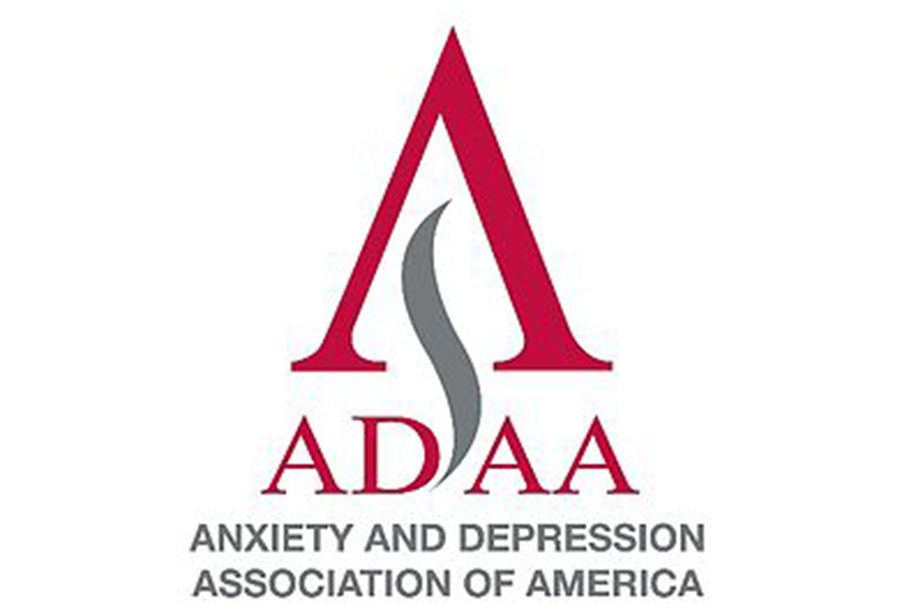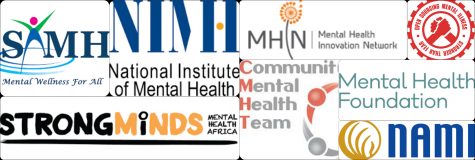Mental illness or not, no one should suffer alone
December 8, 2016
Many people don’t seem to know sufficient information about mental illnesses to be able to help those suffering around them. This article serves to explain some of the more common illnesses and how to assist someone experiencing an episode (a finite period in which someone is affected by a specified illness), or someone having harmful thoughts. Common examples of these episodes are anxiety attacks, depressed moods, mood swings from bipolarism, habitual over or under-eating, hallucinations caused by schizophrenia, and substance abuse or withdrawals. The more widespread this information is, the better everyone can help each other, so no one will have to suffer alone.
Anxiety & Panic Disorders
Anxiety and Panic Disorders are put into the same category because they have similar attributes, but the one big difference that separates them is habituality. Anxiety disorders don’t always cause episodes; the symptoms are regular and constant: fatigue, irritability, difficulty concentrating, and/or uncontrollable worrying. People with this disorder tend to be constantly on edge. On the other hand, victims of panic disorders experience random, “seemingly out-of-the-blue panic attacks,” according to the Anxiety and Depression Association of America. These attacks are extremely anxiety-inducing, and can happen at any point in time, even during sleep.
An anonymous source, who has experience with panic attacks, lists the symptoms he/she experiences: tightness of throat, constrained chest and trouble breathing, sweaty palms, elevated noise levels, irregularly fast heart beats, and crying. “It’s like there is nothing else in the world but that moment and that pain you are feeling,” the student said.
About six million Americans are diagnosed with a type of anxiety or panic disorder every year. There are many more individuals too scared to tell a doctor, or even anyone, who go undiagnosed and untreated. For those who think they may be experiencing this disorder, treatment is known to be highly responsive and doesn’t interrupt daily life. It is better to tell people, even if it is just the doctor, in order to receive help.
If someone around you has a panic attack, stay with them, stay calm, and avoid asking questions. Just help them focus on their breathing; this is where most of the heightened anxiety is coming from. Make them feel comfortable and safe and let them know that everything will be okay.
Depression
Depression, depressive disorder, and clinical depression are all characterized as a treatable mental health illness. Depending on the severity, depression can greatly impact a person’s daily life, draining them of all energy and will. Social cognition, “the ability to identify, perceive, and interpret socially relevant information,” according to psychiatrists, has also been proven to be affected by this disorder.
The National Institute for Mental Health interviewed an ex-marine about his experience with depression: “My work was suffering because I couldn’t concentrate. I felt like I was just going through the motions and wondering what the point of it all was.” Many think that depression is just an excuse for someone to be sad or lazy. This is why diagnosis is the first step to getting help and being treated. Doctors know, and can see, the symptoms of a person with clinical depression. The ex-marine actually made a note to his interviewers that he thought he could fight through anything before depression hit him.
As with most mental illnesses, it makes a big difference to let the person know that he/she has someone there to support them through their illness. It may be tough to constantly check in with them and their moods, thoughts and behaviors, but in retrospect, it can save a person’s life. Physical well-being is also known to affect mental health, so it could prove helpful to urge the person to eat well, drink a lot of water, and exercise regularly.
Last Thursday during CavBlock, HB’s Life of a Cavalier club visited each classroom to talk about mental health and illnesses, and gave out notecards with the signs to look for as well. With the Change Direction movement becoming more and more known, the club has taken the opportunity to further inform the students. Nick Fothergill, Life of a Cavalier member, says that being in the club, and participating in events like last Thursday’s is “a great way to bring awareness about mental health.”
Bipolar Disorder
A recently published science journal describes bipolar disorder, or bipolarism, as “clinically significant episodes of depression and elevated mood (mania or hypomania) with intervening periods of normal mood (euthymia).” In other words, it causes mood swings that may be harmful, depending on their severity, between intervals of normal behavior. Psychiatrists have much difficulty categorizing bipolarism because of its similarities with schizophrenia, due to hallucinations, and other mood disorders that affect mental health.
There is a deep, unrelenting connection between the mental stability of someone with bipolar disorder and their physical well being. It takes a toll on him/her, putting it lightly, and can lead to very serious and harmful occurrences. Five percent of those diagnosed commit suicide, and more die from a “marked increase in mortality rates from natural causes, especially cardiovascular disease.” The onset age of bipolar disorder can vary from adolescence to early adulthood, which, as the average human lifespan continues to augment, has become an increasingly early stage in a person’s life.
Doctors have indicated that while genetics and brain structure play an important role in the development of this disorder, exposure to high stress levels can also trigger a bipolar episode. Exposure to events such as a recent loss, a deteriorating relationship, or financial problems have been recorded as possible causes for an episode. Handling stress levels is imperative to mental health.
The best way to help someone who struggles with bipolarism is to get educated. The most important part to remember is that this illness is real and treatable; it’s not just in his/her head. Be supportive and as patient as possible.
Eating Disorders
There are three main types of eating disorders: anorexia nervosa (or anorexia), bulimia nervosa (or bulimia), and binge eating disorder (or BED). Of course, there are other, less common eating disorders as well, and psychiatrists give them their own sub-category: Other Specified Feeding or Eating Disorder (OSFED).
Anorexia is a very dangerous, self-inflicted illness that most commonly comes from the pressure to be skinny, but can also develop out of stress or anxiety. Though it has been around for a long time, it has become an increasingly popular area of focus in the past years due to growing concern for physical image and need to fit into the supermodel mold. People with this illness see themselves as overweight and do not understand that they are deteriorating both mentally and physically.
Binge eating disorder is on the opposite end of the spectrum. It is categorized as “recurrent episodes of eating large quantities of food…a feeling of a loss of control during the binge; experiencing shame, distress or guilt afterwards; and not regularly using unhealthy compensatory measures (e.g., purging) to counter the binge eating.” Unfortunately, eating is a habit many use to deal with their problems. When the guilt and shame comes after the excessive eating, some turn to food in order to comfort themselves, creating a vicious cycle.
Bulimia is a mix of both binge eating disorder and anorexia. A bulimic person tends to eat and then induces vomiting directly after in order to get the sensation of food without taking it in and digesting it. Again, this disorder focuses on body image, but this time a person usually feels out of control during bulimic episodes, like he/she can’t help his/herself but continue down this path.
When helping anyone with any eating disorder, it is important to understand why he/she developed the affliction in the first place. Eating, as previously mentioned, can be a coping mechanism. Therefore, denial is very common, and to be expected. A friend must be patient and supportive, and help to figure out how to solve whatever it is the victim is trying to cope with outside the disorder. One cannot just tell someone that he/she has a problem; the person must realize it on his/her own, but the friend can be guided and supported in their process.
Schizophrenia
Though one of the least common of mental disorders, schizophrenia has one of the biggest effects on a person’s daily life. Main symptoms include hallucinations, delusions, abnormal thought processes, known as thought disorders, and movement disorders, which include irregular spasming and other awkward shiftings.
Schizophrenia isn’t as well-understood as other mental illnesses because it was first recognized much later than most other disorders. According to Psychology Today, the concept of schizophrenia was introduced in the fourth edition of the Diagnostic and Statistical Manual of Mental Disorders (DSM), released in 1952. As a result, scientists don’t know a lot about how people with schizophrenia develop the illness, or an effective way of treating it. There are treatments, though, and psychiatrists are making new discoveries all the time.
Helping someone with schizophrenia can be very difficult at times because the illness affects a person’s ability to sense social cues, or understand that what he/she is seeing isn’t real. It is easier said than done, but the most important part of the process is staying calm, accepting the situation, and reducing stress on the family member or friend with the disorder.
Substance Abuse & Addiction
Many people nowadays have found themselves or a loved one struggling with addiction. Most drugs or drug-like substances, like alcohol, trigger the brain’s reward system when ingested, creating an addictive nature. After the initial intake, a person can lose control of how much he/she is taking, even when the risks become harmful. The “reward signal” that the brain sends eventually outweighs the potential risks of using a substance and blinds an addict to them. Denial is a huge aspect of abuse; most say that they “can stop whenever they want” or aren’t doing any “serious drugs.”
Assisting someone with an addiction can be a very emotional process. The victim may be relentless in refusing help or avoiding the fact that there is a problem. There are a multitude of steps that can be taken to guide said addict toward professional help. Even if he/she is not cooperative, someone close to him/her can still research doctors and treatment facilities to find the right care. No one can force a person to undergo detoxation, but it is always helpful to be ready in case the addict requests rehabilitation voluntarily. Depending on the situation, an intervention may prove useful, but it also may backfire by creating anger and resentment in the person for whom the intervention was planned. The best help is to always monitor how the person is doing and what decisions he/she is making. Hopefully, the time will come when he/she is ready to admit he/she has a problem. Until then, one can only be in that person’s life so the victim has someone to turn to for help.
Every known mental disorder is treatable, but that doesn’t mean everyone with a mental disorder will receive treatment. It is imperative to remember that people with these afflictions are just that: people. They deserve the same respect and concern that any other person with a serious physical illness would get. The more this information is spread, the more knowledgeable people will be, and the better everyone can take care of one another.















